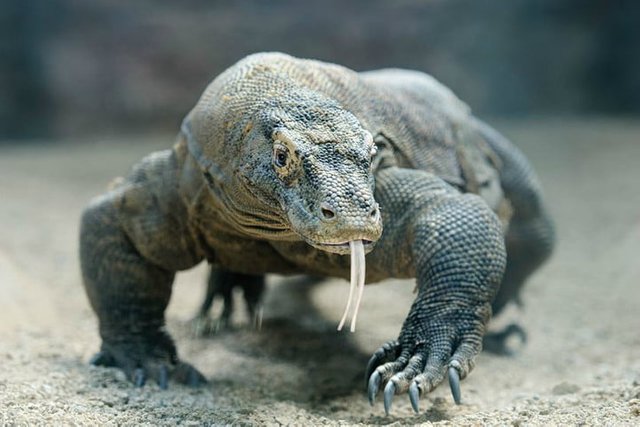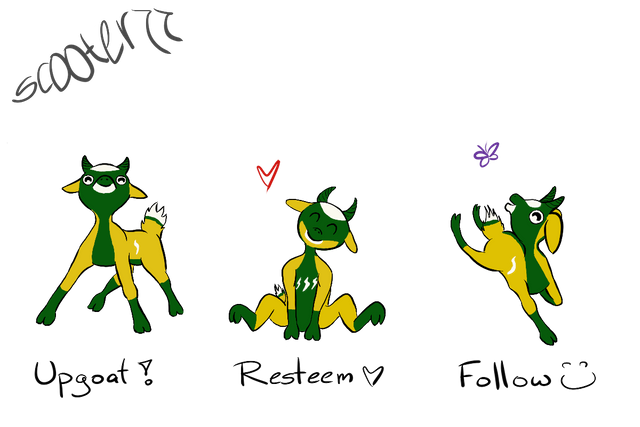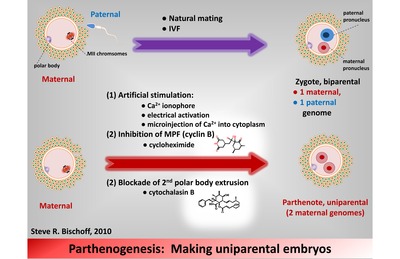
Komodo Dragon
Most species across the Kingdom Animalia reproduce sexually. They required some type of fertilisation to occur where a male and female gamete fuse to produce an offspring that has a mixture of the father and mother's DNA.
The Komodo Dragon is the world's largest monitor lizard in the world. It is found mainly on the island of Komodo in Indonesia and some of the surrounding islands. Since its discovery by the western world just before WWI, it was thought that the Komodo dragon required sexual reproduction to procreate.
Then, one day, a female of the species in a zoo laid a clutch of eggs. These eggs then hatched and four juvenile Komodo dragons hatched. This would normally not have been too amazing, except for the fact that this particular female had not been in the company of a male for over two years. Orignially it was thought that maybe the female Komodo could have stored the sperm from a male for this length of time. However, after DNA analysis occurred, it was found that the offspring where genetic clones of the mother. They were produced via parthenogenesis and were all males. The Komodo dragon can only produce male offspring asexually it was discovered.
Parthenogenesis
Parthenogenesis is a type of asexual reproduction where offspring can develop from unfertilised eggs. It is common in arthropods and some fish and reptiles. No mammal species can reproduce this way.
So why might the Komodo dragon have this option to reproduce? Parthenogenesis can be detrimental in evolutionary terms as there is less DNA to combat mutations in genes and disease or viruses could easily wipe a species out if there is no genetic diversity within a population. It was found that the Komodo dragon reproduced both sexually and asexually and it allowed one animal of the species to be able to colonise new islands. The ancestors of the Komodo can be traced back to monitor lizards that originated in Australia and made their way to the Indonesian islands.
The fact that such a large animal can reproduce asexually and sexually is an amazing feat and one that enables the species to be successful in its habitat.
Thanks for reading.
Awesome Steem Witnesses!


Come and join us in the Team Australia Discord Channel



Mm, didn't know they could only produce males by parthenogenesis, thought as clones they'd copy the gender of the parent as well. Very much rusty on all this stuff I am! XD
Downvoting a post can decrease pending rewards and make it less visible. Common reasons:
Submit
Interesting post about asexual reproduction. I guess that asexual reproduction (or cloning if you will) can be seen as a way to extend life of a certain bearer of one particular set of DNA. This could provide the individual with more opportunities for sexual reproduction in the future. Good write-up!
Downvoting a post can decrease pending rewards and make it less visible. Common reasons:
Submit
What a sexy lizard! I don't I would like to mess with that thing because it looks poisonous right?
Downvoting a post can decrease pending rewards and make it less visible. Common reasons:
Submit
I really like your post, bermamfaat, hopefully more successful , good

Downvoting a post can decrease pending rewards and make it less visible. Common reasons:
Submit
Cool gif man!
Downvoting a post can decrease pending rewards and make it less visible. Common reasons:
Submit
thank u man
Downvoting a post can decrease pending rewards and make it less visible. Common reasons:
Submit
Very danger animal
Downvoting a post can decrease pending rewards and make it less visible. Common reasons:
Submit